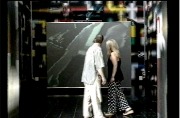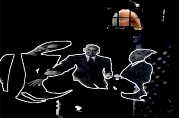Interactive computer installation
Austrian Pavilion, La Biennale di Venezia, 1995
Opaque acrylic glass, live camera, video projector, mirror, Silicon Graphics onyx computer, Silicon Graphics Extreme 2
Software design: Gideon May
With the interactive video/computer environment, Body Scanned Architecture, presented at the Venice Biennale, Ruth Schnell explores a classic interface concept between real architecture (from the Hoffmann pavilion) and imaginary architecture, primarily based on virtual shaped elements by visionary architect Friedrich Kiesler.* A projection screen works as the interface between real space and cyberspace. A virtual camera moves helically over the virtual architecture landscape. The observer´s body is captured by a video camera. Its image on the screen serves as a moving three-dimensional window through which the observer can get a glimpse of the imaginary architecture, which is grounded in absent space (atropia, utopia).
Peter Weibel, in: Ruth Schnell oder der Körper als Schnittstelle zwischen realen und virtuellen Räumen [Ruth Schnell or the body as an interface between real and virtual spaces]
*Friedrich Kiesler went into exile, while Josef Hoffmann, a sympathizer of Austro-Fascism, was honoured in Austria.
Exhibitions:
1999, Zeichenbau, Künstlerhaus, Wien (AT)
1995, 46th Biennale di Venezia, Austrian Pavilion, Venice (IT)
Bibliography:
=> Aigner, Carl: Tektonische Körper. Publiziert in: Schnell, Ruth: On the occasion of La Biennale di Venezia 1995, Wien 1995=> Hofleitner, Johanna: Ruth Schnell – Das Sehen re-konstruieren. Publiziert in: EIKON - Internationale Zeitschrift für Photographie & Medienkunst, Heft 24, Triton Verlag, Wien 1998
=> Koweindl, Daniela: Ruth Schnell. Publiziert in: La Casa, il Cuerpo, il Cuore - Konstruktion der Identitäten, Ausstellungskatalog, Museum Moderner Kunst Stiftung Ludwig Wien, Wien 1999
=> Schnell, Ruth: In/different Spaces. Vortrag, 1999 im Rahmen des Projektes Differenz am Institut für Kunstgeschichte der Universität Innsbruck gehalten. Publiziert in: Institut für Kunstgeschichte der Universität Innsbruck (Hg.): Differenz, Innsbruck 1999
=> Weibel, Peter: Ruth Schnell oder der Körper als Schnittstelle zwischen realen und virtuellen Räumen. Publiziert in: Ruth Schnell: On the occasion of La Biennale di Venezia 1995, Wien 1995
 Images
Images
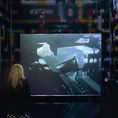
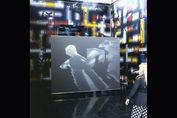
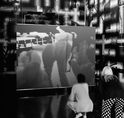
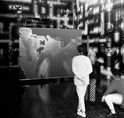
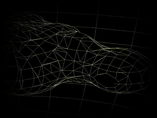
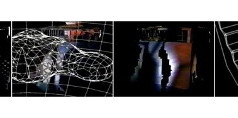
 Video
Video
